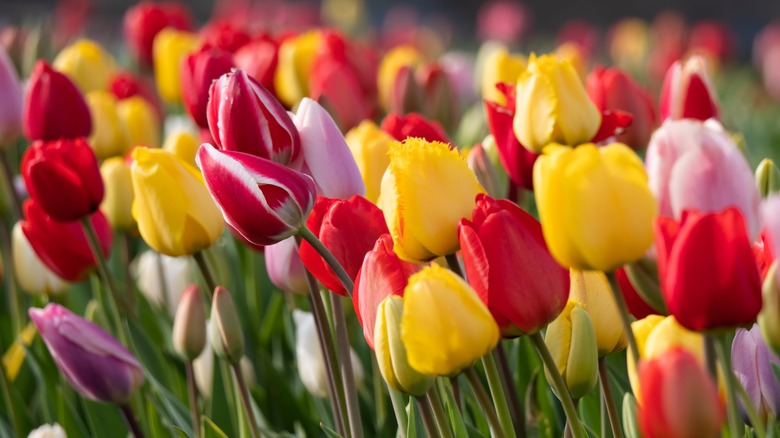The secret to creating a visually stunning and beautiful garden doesn’t require any particular expertise. It simply requires you to reflect on a tool you have probably known about since kindergarten: the color wheel!
The color wheel is based on color theory, a discipline focusing on the ways the human eye perceives and processes color. But you don’t have to have in-depth knowledge of color theory to understand how to incorporate the color wheel into your garden planning. A basic color wheel can be used to comprehend the ways in which various colors contrast each other visually. Simple, aesthetically pleasing flower beds can be created by mixing shades and similar colors together, while more complex and striking gardens can be built using complementary colors. If you have the space in your garden, you could even test out different color schemes in different areas to see which aspects of color theory you are most drawn to.
Pairing colors together

If you are interested in making sure your front yard visually pops during blooming season, the color wheel can be a secret hack to help make planning your flower bed a lot easier. Indeed, as Garden Design pinpoints, you’re going to want to keep four words in mind when determining your flower color relationships: monochromatic, analogous, complementary, and complex.
Monochromatic pairings can refer to using just one color, or a variant of shades of the same color. Monochromatic flower beds with just one color can be striking, if a little simple. Mix it up by incorporating in a range of different shades. Analogous pairings take the shade differences a step further by mixing two colors that are right next to each other on the color wheel. Common analogous pairings include red and orange and blue and purple. Analogous colors can create an overall “temperature” for your garden, with reds and oranges evoking warmth and blues and purples evoking coolness.
Complementary pairings take a different approach entirely. Complementary colors are those that are directly opposite each other on the color wheel. These colors can look especially stunning when paired together. Complementary colors include red and green, orange and blue, and yellow and purple. For an added layer of design, you could blend multiple colors together in a complex scheme, which refers to the mixing of two analogous colors and one of their complementary colors.
How to choose colors to mix
The color wheel can help you pick out complementary and analogous colors once you have a few colors to start with, but how do you know which colors you want to build your garden on? It can help to take a step back and try to determine what you’re hoping to accomplish with your garden’s aesthetics.
Are you dreaming of a shady sanctuary from the blaze of the summer heat? Cooler colors, like blues and greens, will probably be a good place for you to start. Are you hoping for an eye-popping display that will catch the eye of everyone driving by? Picking out a bold central color, like red, can be a launchpad to build out from there. Cornell University’s Garden-Based Learning Program also advises gardeners to remember that flowers are not the only source of color in your garden. Grasses, shrubs, and bushes (some of which may also produce flowers) can lend visual complexity to your overall garden aesthetic.